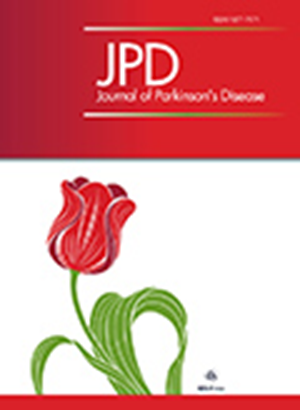保守铁螯合治疗VAC14:两年临床放射随访。
IF 5
3区 医学
Q2 NEUROSCIENCES
Journal of Parkinson's disease
Pub Date : 2025-06-01
Epub Date: 2025-04-13
DOI:10.1177/1877718X251331820
引用次数: 0
摘要
对于脑铁积累引起的神经退行性疾病的最有效治疗方法,目前明显缺乏共识。这是由于该疾病的罕见性,其表型变异性和病理生理机制的多样性。我们的团队已经建议在神经铁蛋白病的病例中使用保守的铁螯合治疗,并取得了有趣的结果。然而,尚未提及与VAC14基因突变相关的帕金森病-肌张力障碍的治疗。本文报道的病例说明了保守铁螯合治疗2年后的临床稳定性,影像学表现也有所改善。本文章由计算机程序翻译,如有差异,请以英文原文为准。
Conservative iron chelation for VAC14: Two-year clinical-radiological follow-up.
There is a distinct lack of consensus on the most effective treatments for neurodegeneration with brain iron accumulation. This is due to the rarity of the disease, its phenotypic variability, and the multiplicity of pathophysiological mechanisms. Our team has already proposed the use of conservative iron chelation in cases of neuroferritinopathy, with interesting results. However, no mention has yet been made of the treatment of parkinsonism-dystonia related to VAC14 gene mutations. The case reported here illustrates clinical stability after 2 years of conservative iron chelation, with an improvement in radiological images.
求助全文
通过发布文献求助,成功后即可免费获取论文全文。
去求助
来源期刊

Journal of Parkinson's disease
NEUROSCIENCES-
CiteScore
8.40
自引率
5.80%
发文量
338
审稿时长
>12 weeks
期刊介绍:
The Journal of Parkinson''s Disease (JPD) publishes original research in basic science, translational research and clinical medicine in Parkinson’s disease in cooperation with the Journal of Alzheimer''s Disease. It features a first class Editorial Board and provides rigorous peer review and rapid online publication.
 求助内容:
求助内容: 应助结果提醒方式:
应助结果提醒方式:


